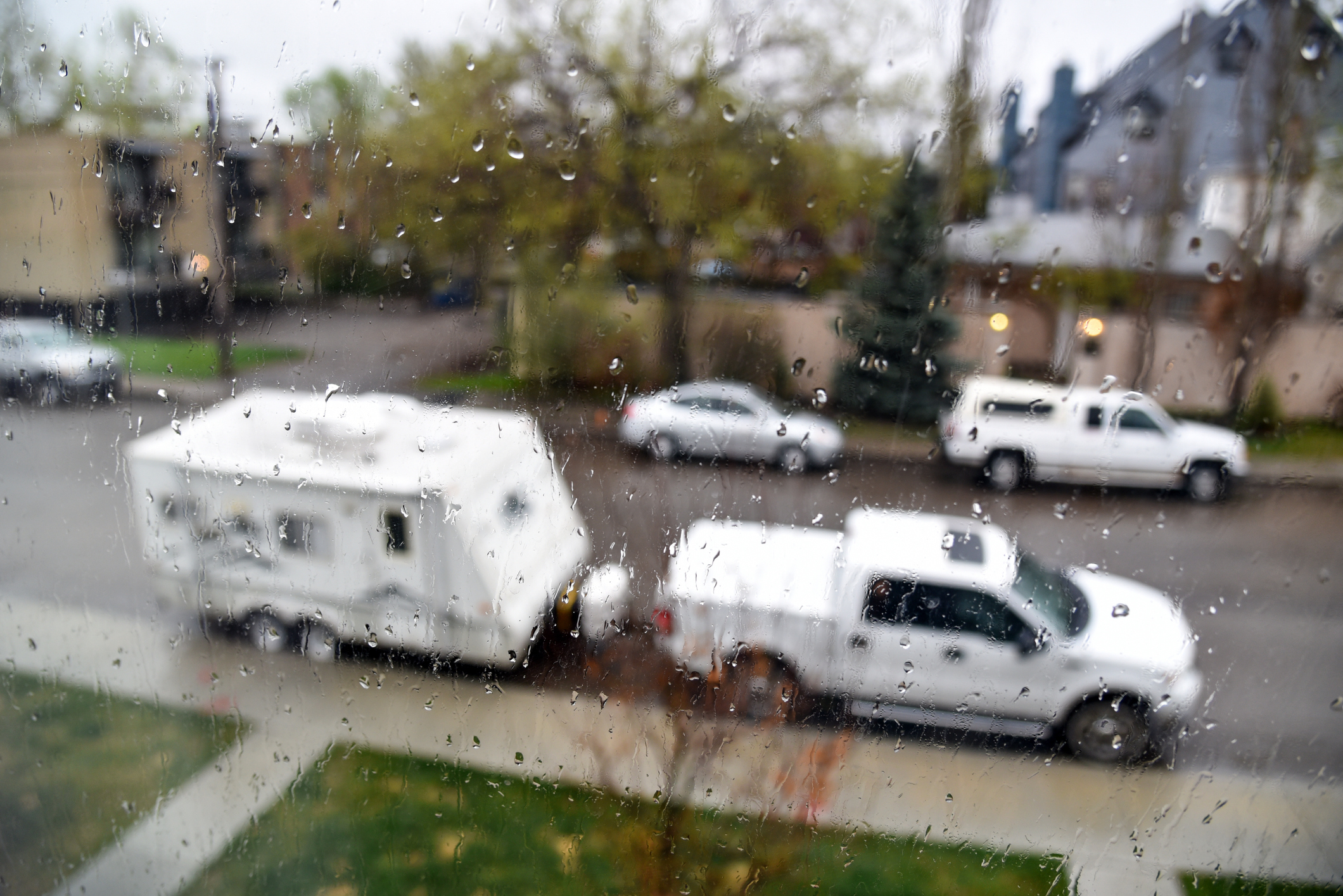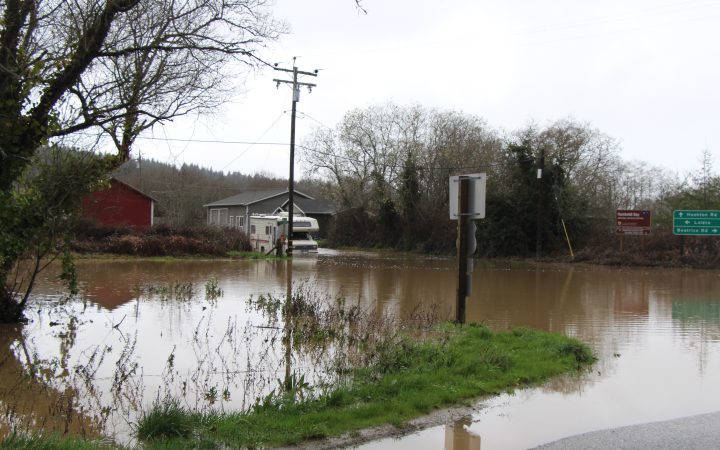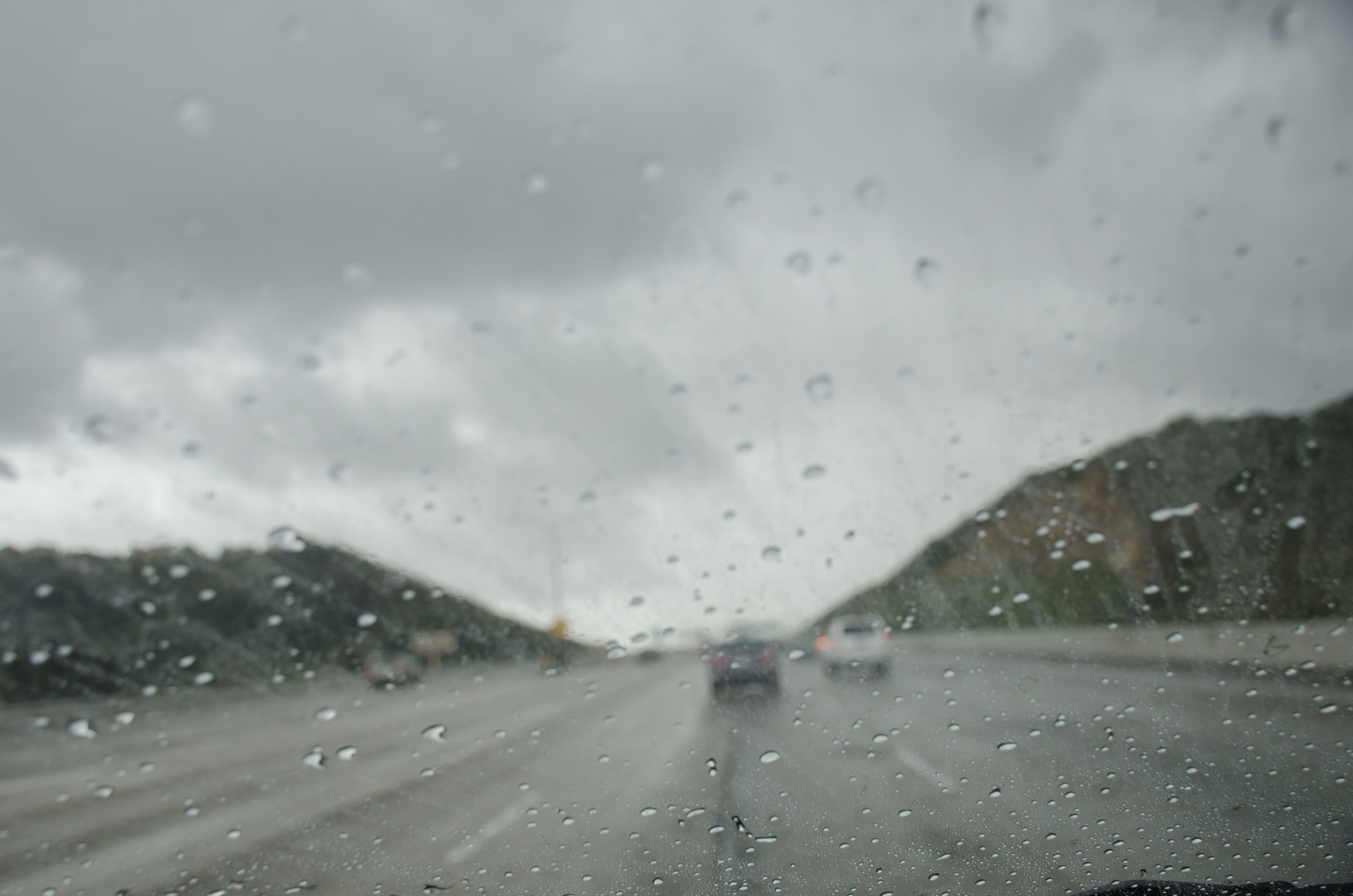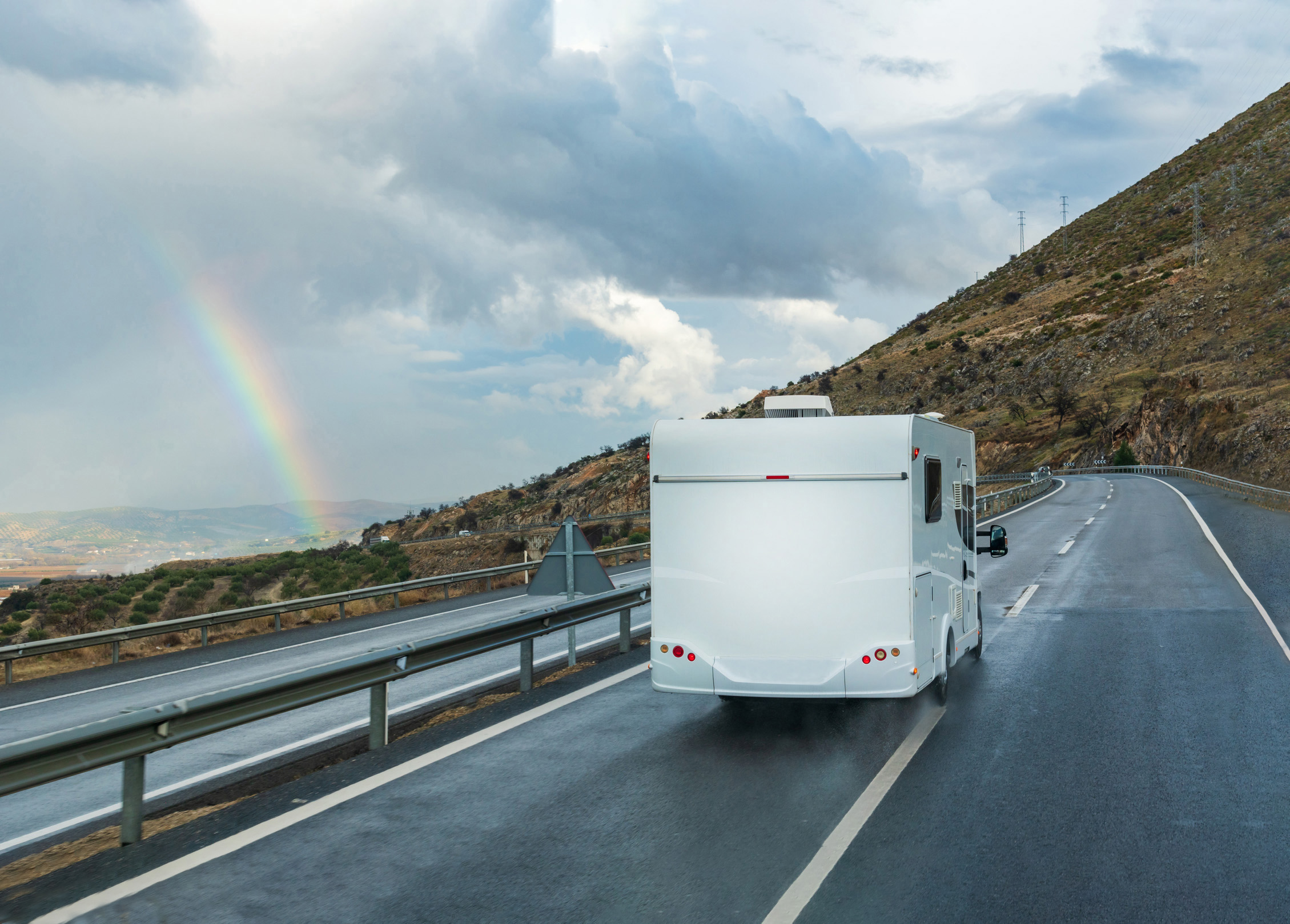Most RV owners in North America do the majority of their travel and camping in the summer and extended shoulder seasons. This generally avoids their exposure to driving in winter-like weather such as snow and ice. But poor weather driving conditions are not necessarily confined to the colder months. Late spring and early summer rains can put a damper on your RV trip. Indeed, precipitation can present very challenging driving conditions. Don’t underestimate the impact that even light rain can cause on your travels.

Getty Images
Because we have driven in rain countless times, little thought is given to wet weather. However, rainy weather can create several driving hazards, especially with a large heavier vehicle. Let’s take a look at some of the problems that precipitation can spawn.
Slippery Road Surfaces
Wet road surfaces have less traction than dry surfaces, resulting in reduced tire grip and braking effect. This is especially true during the early phases of the precipitation, as oil from the highway traffic disperses. Loss of tire grip can result in skidding sideways in a turn. If you drive around a corner at a speed that is close to the side force grip of a tire’s traction threshold, even a slight bump may launch you into a skid. Reduce speed in all turns.
Possible Flooded Roadway

Photo: Peter Mercer
Heavy rain, spring run-off or body-of-water storm surge are all potentially dangerous events. Do not proceed if the roadway is flooded. Many experts claim that motorists should avoid any water that is deeper than 4 inches. If the water level ever reaches the body, the vehicle may be carried off by the flow. Do not proceed if flooding is encountered or forecasted for your route. Hold up until the water levels recede.
Reduced Visibility
Similar to a winter white-out, heavy-driving rain can substantially reduce or eliminate one’s visibility. Find somewhere safe to stop until the precipitation stops or eases.
Sunshine and Headlight Glare
Water-soaked windshields with windswept wiper streaks tend to make seeing through the windshield very challenging. Stop in a safe location and clear your view, if possible. If your wiper blades just aren’t hacking it, replace windshield wipers and check your glass for chips that might interfer with wiper-blade travel.

Getty Images
Pooled Water on the Roadway
Puddled or pooled water caused by excessive precipitation and/or inadequate drainage can result in tire hydroplaning. This occurs when a vehicle’s tire(s) leave the road surface and plane on the water surface. It slides in the direction of the vehicle’s momentum and can no longer be controlled by the driver. Again, this is best avoided by reducing speed during heavy precipitation or when water pooling is observed. Travel in the lane with the highest elevation and watch the traffic ahead for water strike. Decrease speed within a safe margin pending surrounding traffic flow.
Encountering a Squall Line
Squall lines can be embedded in an approaching weather front. These unpredictable mini storms can produce heavy downpours, damaging hail and gusty, high winds. Be aware of penetrating a weather front. It will always have an immediate wind direction shift. Then watch for fast-approaching rain or hail. If a squall hits, park somewhere safe and wait it out. Squalls generally last less than one hour.

Getty Images
Know Before You Go
Consult the weather app on your phone or weather reports on TV or radio before you set out on your trip. It might be worth it to postpone the next leg of your trip and instead fix a nice hot cup of tea or coffee while the rain passes. Devices like weather stations and weather radios also can help you ascertain conditions in the surrounding areas.
Handle With Care
Much of a vehicle’s handling when driving in the rain is dependent on the tire make, type and condition. In addition, the vehicle’s weight and mechanical attributes also play into the overall performance. Before any trip, make sure your vehicle is not exceeding its weight limits and check to ensure that your tires are in good shape. This care will pay big dividends further down the road.
To put it in a nutshell: RVers driving in the rain need to follow basic rules: reduce speed, drive with headlights and running lights on, make sure wipers are in good condition, and check to see that tires are up to the vehicle’s manufacturer’s specifications and in good condition.
So drive carefully and enjoy another fun-filled RV season.
Peter Mercer — Precipitation Anticipation




